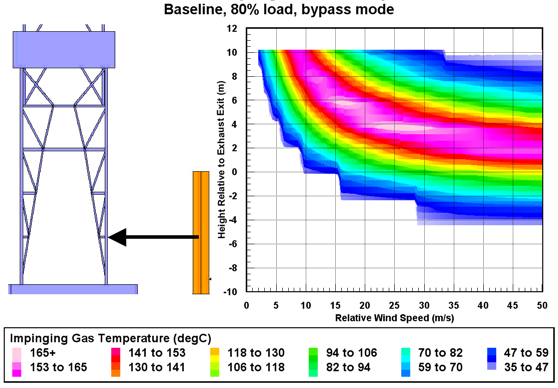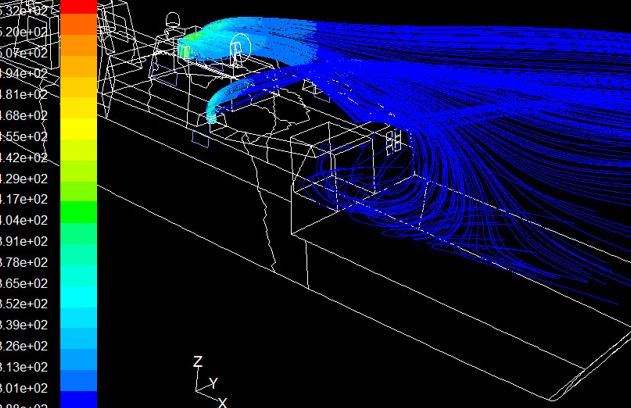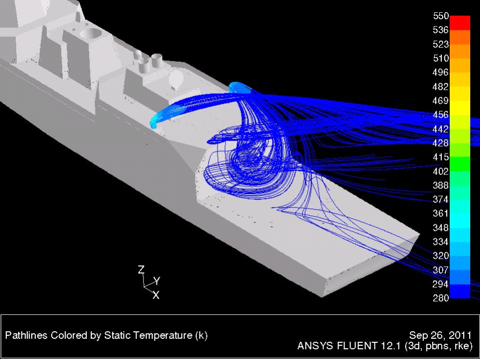Empirical Exhaust Plume Prediction
- There are principally four ways to assess/predict the behaviour of an exhaust plume:
i) full scale measurements (sea trial);
ii) scale model testing in a wind or water tunnel;
iii) numerical simulation using Computational Fluid Dynamics (CFD); and
iv) empirical correlations based on already existing measured data. - Full scale and model testing are expensive and take a great deal of time. It becomes difficult to isolate the environmental variables in which you are interested.
 Empirical Analysis of Exhaust Impingement on a Drilling Derrick
Empirical Analysis of Exhaust Impingement on a Drilling Derrick
Davis has developed an empirical prediction method using a set of equations to define the behaviour of the exhaust that correlates to a number of past experimental data sets. Presently Davis uses almost exclusively correlations established by Baham in 1977. Baham’s correlations are based on an extensive body of measured data from a British cruiser and the full scale U.S. DD-964 measurements. DAVIS has added an additional equation to deal with the situation of the stack not being perpendicular to the wind.
These correlations are integrated into a Davis software package to determine impingement temperatures at abitrary locations relative to the stack exit for a range of wind speeds and headings. This information is combined with probability data for wind speeds and headings depending on the global location of the installation.


